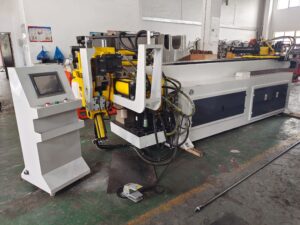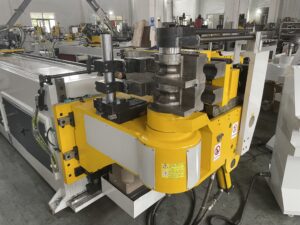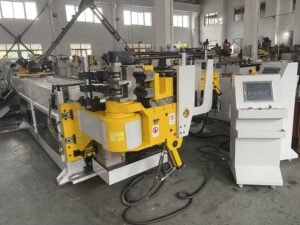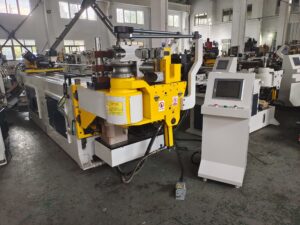Before diving into the bending process, it’s important to understand the properties of square pipes. Square pipes, also known as square tubes, are hollow structural sections (HSS) with a square cross-section.
Why Bend Square Pipe?
Bending square pipe is often necessary to create custom shapes and structures. Whether you’re designing a handrail, a frame, or a piece of furniture, bending allows you to achieve the desired form without compromising the structural integrity of the material.
Tools and Equipment Needed to Bend Square Pipe
To bend square pipe, you’ll need the right tools and equipment. Here’s a list of essential items:
- Pipe Bender: A manual or hydraulic pipe bender is the most common tool used for bending square pipes. Ensure the bender is compatible with the size and material of your pipe.
- Mandrel: A mandrel is used to support the inner wall of the pipe during bending, preventing it from collapsing or wrinkling.
- Heat Source: For certain materials, applying heat can make the bending process easier. A propane torch or induction heater can be used.
- Clamps and Vises: These tools help secure the pipe in place during bending.
- Measuring Tools: A tape measure, protractor, and marker are essential for accurate measurements and angles.
- Safety Gear: Always wear safety glasses, gloves, and appropriate clothing to protect yourself during the bending process.
Step-by-Step Guide to Bend Square Pipe
Step 1: Measure and Mark the Pipe
Start by measuring the length of the pipe that needs to be bent. Use a marker to indicate the bending points.
Step 2: Secure the Pipe
Place the square pipe in the pipe bender, ensuring it is securely clamped. If you’re using a mandrel, insert it into the pipe at the bending point.
Step 3: Apply Heat (If Necessary)
For materials like steel, applying heat can make the pipe more pliable. Use a propane torch to heat the bending area evenly. Be cautious not to overheat, as this can weaken the material.
Step 4: Bend the Pipe
Slowly apply pressure to the pipe using the pipe bender. If you’re using a manual bender, use steady, even force. For hydraulic benders, follow the manufacturer’s instructions to achieve the desired angle.
Step 5: Check the Angle
Once the pipe is bent, use a protractor to check the angle. If adjustments are needed, reheat the pipe (if applicable) and make the necessary corrections.
Step 6: Cool and Inspect the Pipe
Allow the pipe to cool naturally if heat was applied. Inspect the bend for any signs of cracking, wrinkling, or deformation. If the bend is satisfactory, you can proceed to the next step in your project.
Tips for Successful Square Pipe Bending
- Choose the Right Material: Different materials have different bending properties. For example, aluminum is more malleable than steel, making it easier to bend.
- Use a Mandrel: A mandrel is essential for preventing the pipe from collapsing during bending, especially for thinner-walled pipes.
- Practice Makes Perfect: If you’re new to bending square pipes, practice on scrap pieces before working on your actual project.
- Safety First: Always wear appropriate safety gear and follow the manufacturer’s instructions for all tools and equipment.
Common Challenges and Solutions in Bending Square Pipe
Challenge 1: Pipe Collapse
Solution: Use a mandrel to support the inner wall of the pipe during bending. This will help maintain the pipe’s shape and prevent collapse.
Challenge 2: Uneven Bends
Solution: Ensure the pipe is securely clamped and that you apply even pressure during the bending process. Using a hydraulic bender can also help achieve more consistent bends.
Challenge 3: Material Cracking
Solution: Apply heat evenly and avoid overheating the pipe. For materials prone to cracking, consider using a softer material or annealing the pipe before bending.
Advanced Techniques for Bending Square Pipe
Cold Bending vs. Hot Bending
- Cold Bending: This method involves bending the pipe at room temperature. It’s suitable for softer materials like aluminum and thin-walled steel pipes.
- Hot Bending: This technique involves heating the pipe before bending. It’s ideal for thicker-walled pipes and harder materials like stainless steel.
Using a Hydraulic Pipe Bender
Hydraulic pipe benders offer more control and precision, making them ideal for complex bends and large-scale projects. They are particularly useful for bending thicker and harder materials.
CNC Pipe Bending
For industrial applications, CNC (Computer Numerical Control) pipe benders provide the highest level of precision and repeatability. These machines are programmed to bend pipes to exact specifications, making them ideal for mass production.




